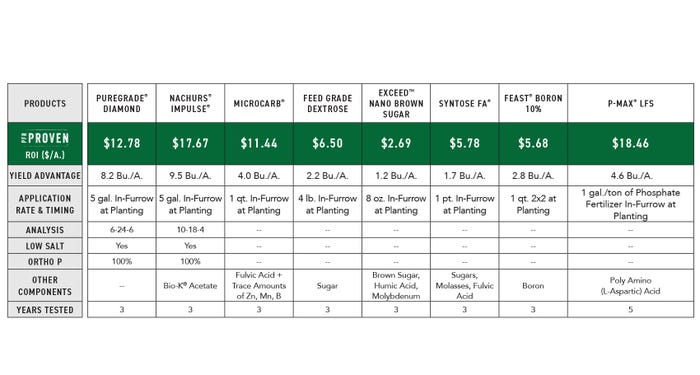January 15, 2024

"The Corn Soil Alliance." Break the title down. Re-read it. Know the characters. Take a second to understand that the soil is as important to corn as the corn (or corn roots) are to the soil.
Now, realize you have just started a marathon of the corn soil alliance, took that first step, but then comes the hard part. The rest of this marathon that we are pondering has no route, no map, and no finish line. It may sound odd, but when we look at the relationship between soil and roots, the vast number of chemical reactions, the huge number of microorganisms involved, and the thousands of environmental factors that can influence nutrient uptake to the plant, there is a lot yet to be learned. It may sound daunting, but rest assured that the little we do understand in the grand scheme of soils and roots can be drastically influenced by different farming practices and bring us positive returns.
The corn soil alliance starts with an area that is referred to as the rhizosphere. Rhizosphere is defined as the region of soil in the vicinity of plant roots in which the chemistry and microbiology are influenced by their growth, respiration, and nutrient exchange. This area is very nutrient-rich, high in biological activity, and the main exchange point between roots and soil. What goes on in the rhizosphere is downright complex and confusing, so I will approach it from the thirty-thousand-foot view.
As corn plants grow, they produce root exudates. These are organic compounds such as simple sugars, amino acids, and organic acids that are secreted through the roots into the soil. The microbial community uses these exudates as a food source that keeps them active to release needed nutrients to the corn plant to be taken up through the roots. This process is also a signaling mechanism for fungi that form a beneficial relationship with the root to increase nutrient uptake and reach.
Beck’s Practical Farm Research (PFR)® team has looked at ways to adjust our management practices that will influence the rhizosphere. Those practices can be segmented into three areas. The first way to influence the rhizosphere is by adding to the alliance. This would be adding synthetic fertilizer in the root zone at planting to have nutrients available to the small seedlings once roots develop. Option two for influencing the rhizosphere is to add to the soil alliance by feeding the microbial life within the rhizosphere. The third way to influence the corn soil alliance would be to add strains of microbes (living or non-living) to the soil at planting.
ADDING SYNTHETIC FERTILIZERS
Two in-furrow synthetic fertilizer products have shown consistent results in Beck’s PFR testing and have become PFR Proven™. Puregrade® Diamond 6-24-6 and NACHURS® Impulse 10-18- 4 can both be safely applied in-furrow at a 5 gal. rate. These will influence the rhizosphere by adding sufficient early-season phosphate to the corn crop. Phosphorus is essential for early-season growth, but uptake may be delayed in cooler soils where microbial activity and symbiosis from mycorrhizae fungi are slow.
ADDING A FOOD SOURCE FOR MICROBIAL LIFE
Option two for influencing the rhizosphere is to feed the microbial life that is naturally present in the soils. One of the best ways to do this is by trying to mimic the compounds that are present in root exudates, the simple sugars and amino acids. You can see in the PFR Proven data below that many of the nutrition products in this category contain sugars, fulvic and humic acids, and other amino acids. Providing a viable food source for the microbes will allow them to cycle nutrients more efficiently and potentially expand their populations. These products are a great entry point for farmers looking to expand their yields and ROI as they are easy to apply and have low input options.

Photo submitted by Beck's Hybrids
ADDING BIOLOGICAL STRAINS
Adding biological strains to the soil rhizosphere is the most complex way to influence the rhizosphere.
The products in this segment add biological communities to your soil to increase nutrient cycling activities and aid in root growth. A list of Beck’s PFR Proven biologicals can be found HERE. This is a great place to start if you are looking to add biologicals to your management plan. This segment contains over 4,000 products available on the market, all with different strains of biologicals. The products listed as PFR Proven have been tested multiple years at multiple locations and have provided consistent yield gains and average a positive ROI.
Understanding the relationship between the corn roots and soils is something that we will never fully understand, but there are many practices we can do and products that we can use to benefit the rhizosphere and take our corn production to the next level.
Beck's - Farmers At Heart® - revolutionized the customer seed buying experience by remaining true to a foundation built on faith, family, and farming. Founded in 1937, Beck's appreciates the farmers who have helped them become the largest family-owned retail seed company and the third-largest seed brand in the United States. The Beck family is now in its fifth generation of family members who work in the business to honor God and help farmers succeed. The Beck family and team of employees help farmers achieve success from generation to generation through authentic customer experiences, product diversity, seed quality, and performance. With a home office located in Atlanta, Ind., Beck's serves farmers throughout the Midwest and Mid-South. For more information about Beck's Superior Hybrids, Inc., visit www.beckshybrids.com.
You May Also Like





